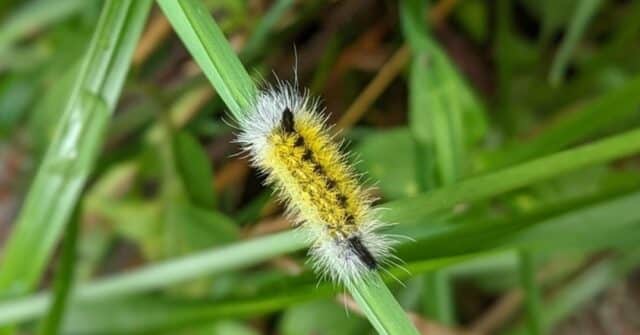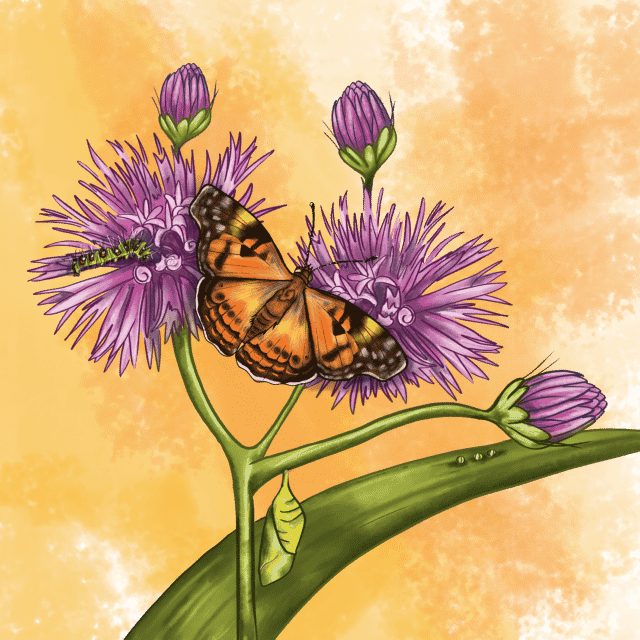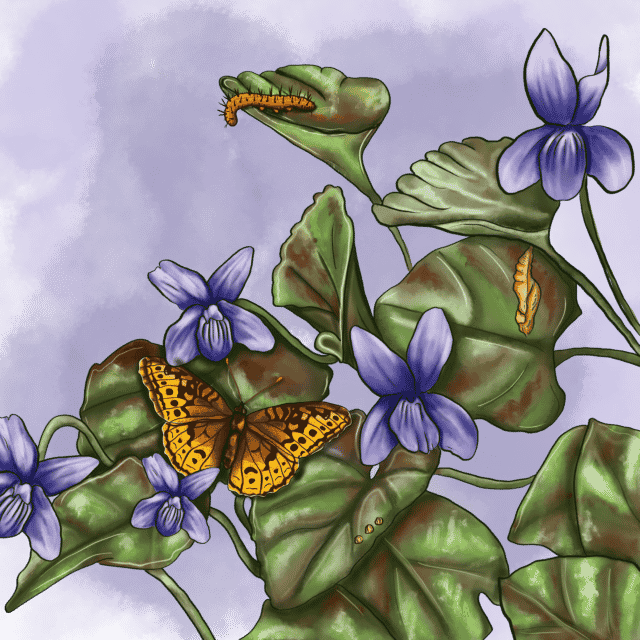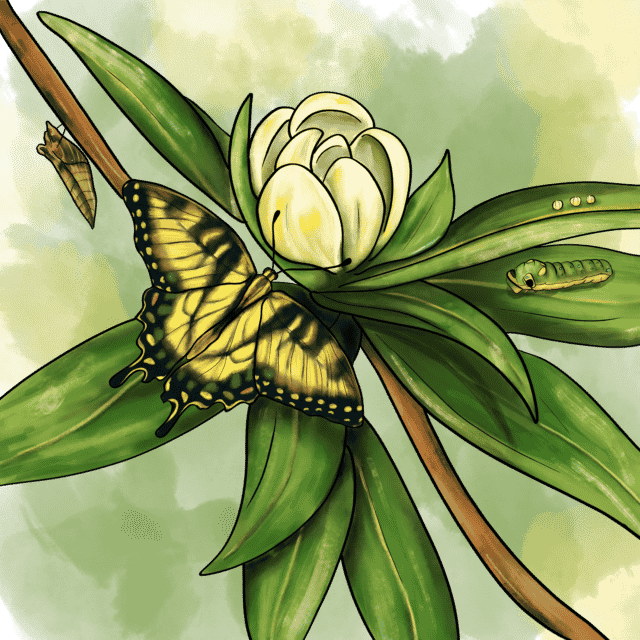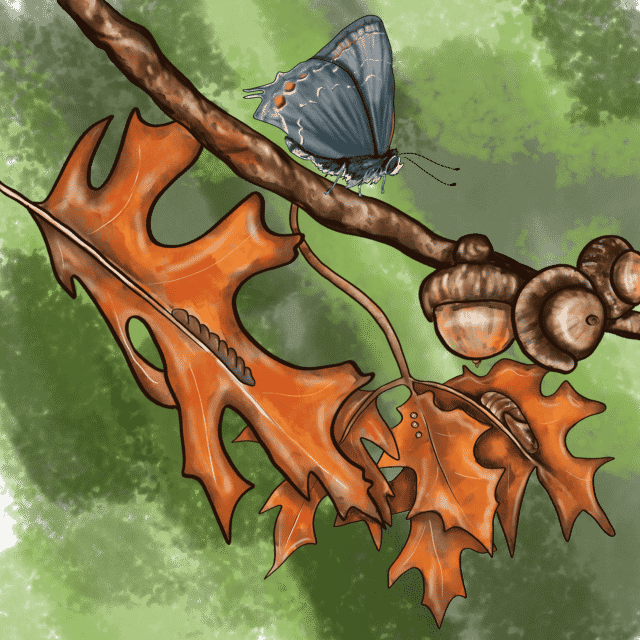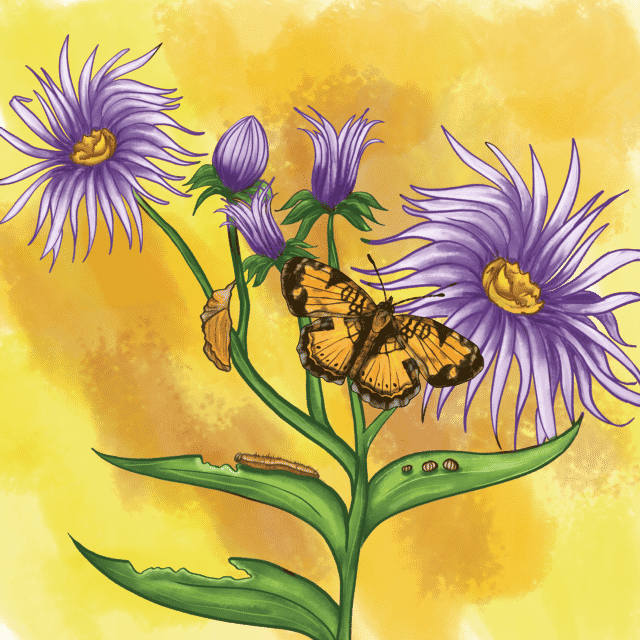Behind the Scenes with Cleveland Botanical Garden’s Butterflies
March 27, 2023

By Matt Edwards, Animal Care Specialist
It’s that time of year, the Return of the Butterflies. Have you ever wondered where Cleveland Botanical Garden’s biome butterflies come from, how they get here, and what goes into getting them flying in the glasshouse? Let’s walk through each step in this process and learn all about it!
The Garden sources our butterflies from small, family operated tropical butterfly farms. I use one domestic supplier in Florida, Butterfly Dan’s, and three others: Neotropical Insects in Suriname, Heliconius in Ecuador, and Mariposario del Bosque Nuevo in Costa Rica. Using multiple farms protects against crop failure and increases species diversity. Packages are shipped Express Mail and arrive here in 1-4 days. The shipments are often stopped and inspected by the USDA which delays them a day. They inspect the box to ensure it contains only species allowed on our permit.
Since I receive butterflies from international suppliers, we are required to maintain species-specific permits and follow USDA regulations governing all importation, display, and disposal of exotic insects. In a word, their concern is containment: preventing any non-native butterflies or their parasites from being introduced to Ohio. To comply I use two -800 centigrade freezers to freeze plant compost and dead butterflies and other organics for three days. The USDA will arrive unannounced occasionally to inspect our facility for compliance.
I say “butterflies,” but they are received not as adult butterflies but as pupae. Each farm has its own method of packing them to ensure they get here safely. They can arrive inside rolled toilet-paper in plastic cups, layered in thick cotton batting, packed individually into drilled foam sheets, or laid end to end and rolled like cigars in paper towels (photos 1 & 2). I typically get about 250 per week but for spring and early summer that number is doubled.
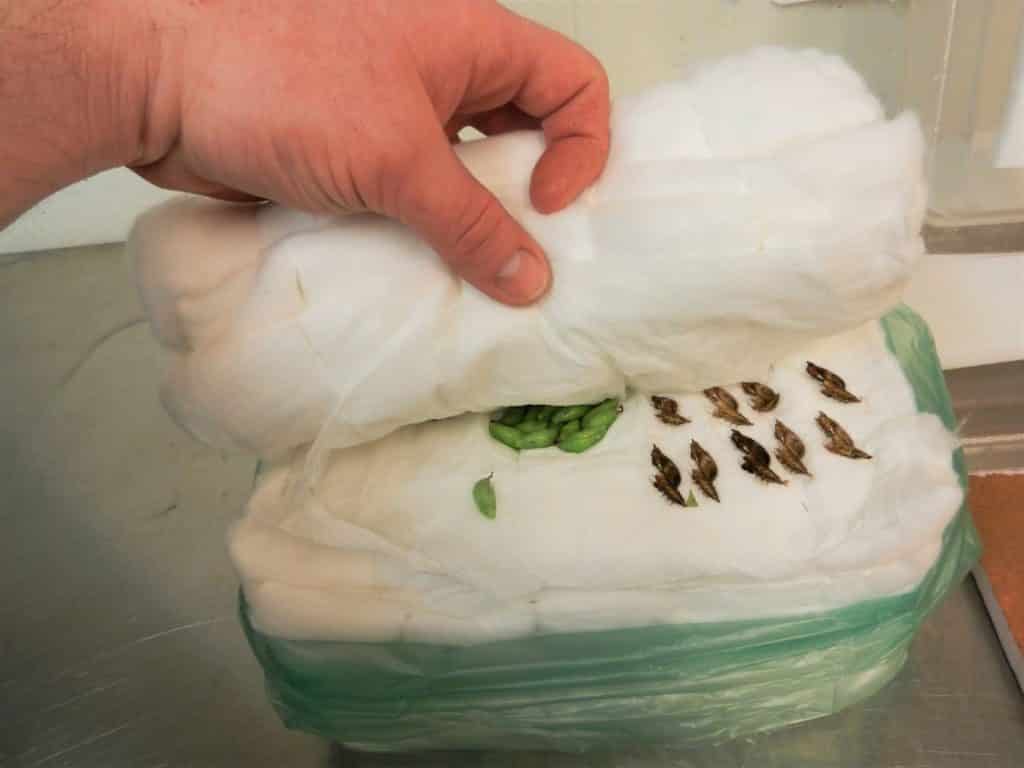
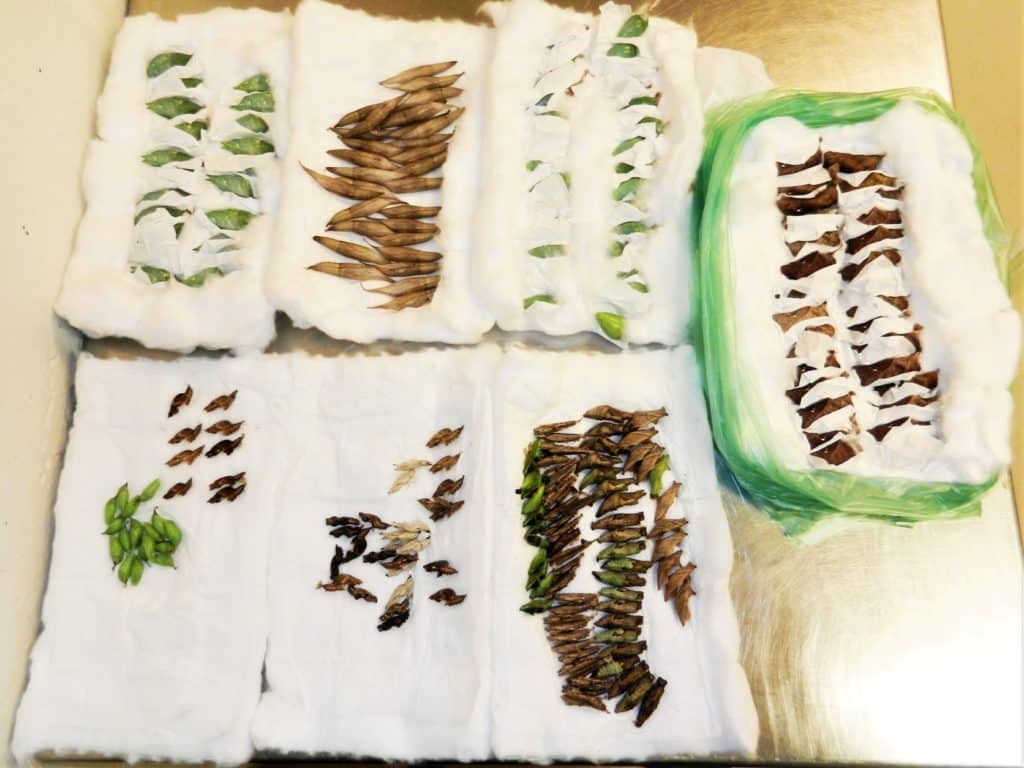
When I receive a box of butterfly pupae, it heads directly to the pupae room downstairs for unpacking and preparation. The pupae room has an air curtain like those above the Costa Rica doors. This blows butterflies back into the room when the doors open. On our sterilized worktable (photo 3) I carefully unpack the pupae and examine them for damage, disease, or parasites.
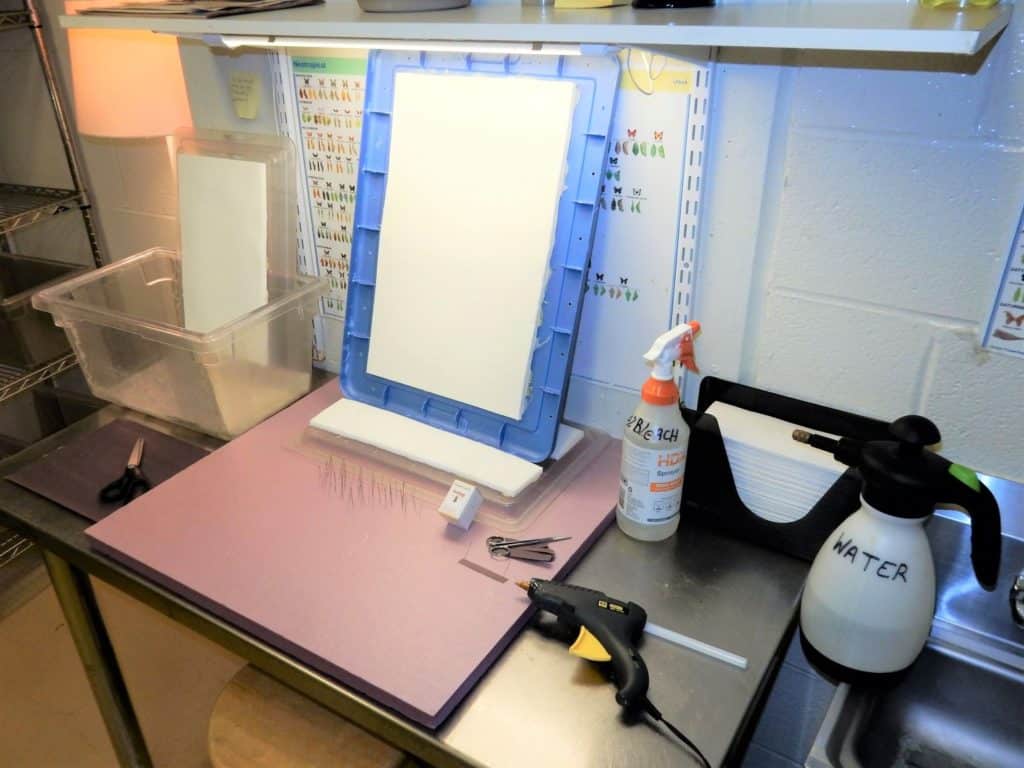
Then insect pins are used to hang each pupa upside down from the foam-lined lid of an incubation chamber (photo 4). Pupae usually have a bit of silk on their “tails” through which I can safely pin. When there is none, I use a low temperature glue gun to attach a bit of construction paper to the pupa for pinning. Before placing the lids, I line the bottoms of these boxes with moistened paper towels to maintain the high humidity which helps the butterflies emerge well (photo 5).
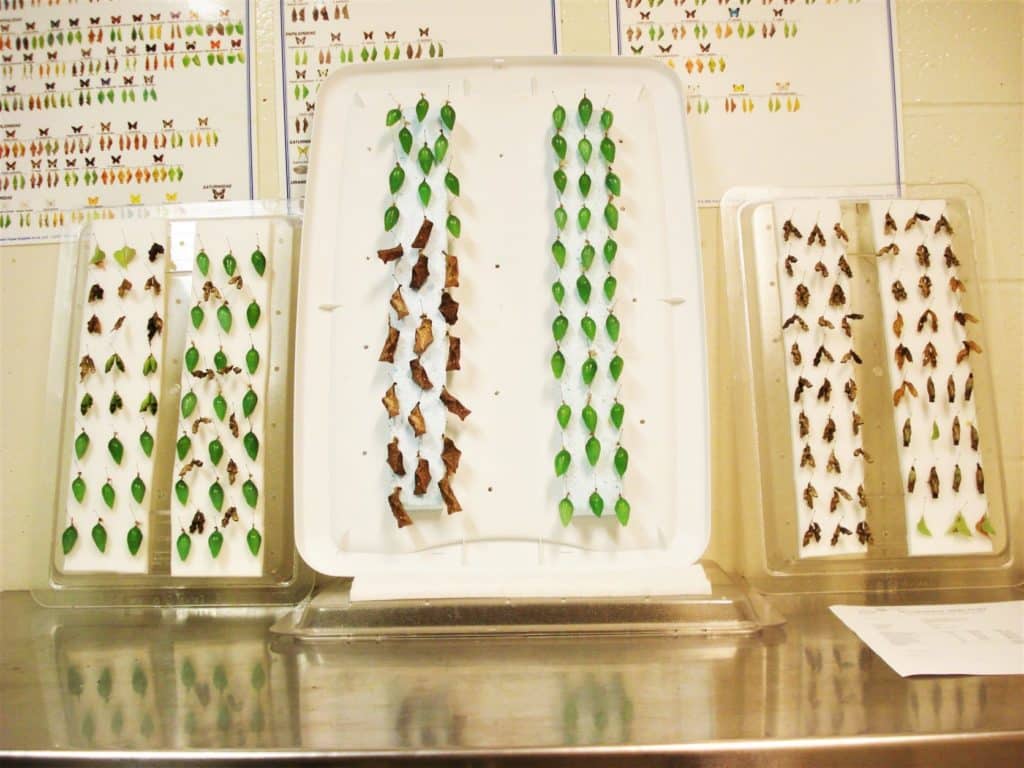
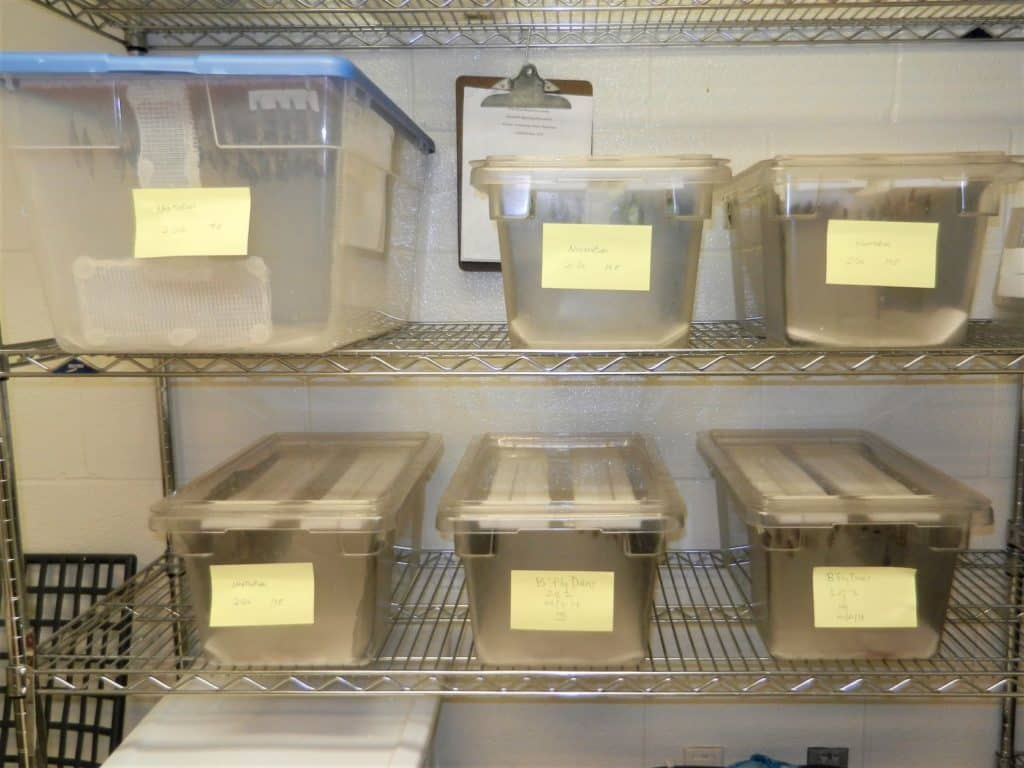
Within a few days the pupae will begin hatching. When each new butterfly emerges, it clings to the empty pupa case or the lid and hangs upside down while it pumps hemolymph (at this stage a mix of insect “blood” and dissolved caterpillar cells) from its swollen abdomen into its tiny, wet, folded wings to expand them to full size and then will wait patiently for several hours while they dry. It is very important that the wings hang unobstructed so that they dry in the proper shape. Otherwise, they will be permanently malformed, preventing the butterfly from flying. Last, remaining hemolymph is expelled to lighten the insect for flight.
Each morning I check the incubation chambers and collect any adults with dry wings for release in the glasshouse. I also check the remaining pupae for health, add water to the towels if needed, and replace towels stained with hemolymph.
So, what could go wrong? If the shipment is delayed the butterflies begin hatching within the box where their wings cannot properly unfurl or dry. Pupae can also be shipped with disease, or frozen or cooked during shipping. Parasitic flies and wasps sometimes infect pupae before they are harvested. This is why I look into each incubation chamber and the Costa Rica pupae case before I open them each day. Parasitic flies emerge during the night from an infected pupa as larva, fall to the floor of the case, and pupate. If the pupa is parasitized by a wasp, it can be of two kinds: a single, penny- sized wasp or 2 dozen or so very small, yellow wasps (photo 6). If I find parasites, I collect and contain them and then freeze them. The pupae case in Costa Rica is designed so that it can be removed from the outer case without being opened and then carried down to the pupae room to be opened where there is no chance the parasites can escape. I typically find parasitized pupae several times per year.
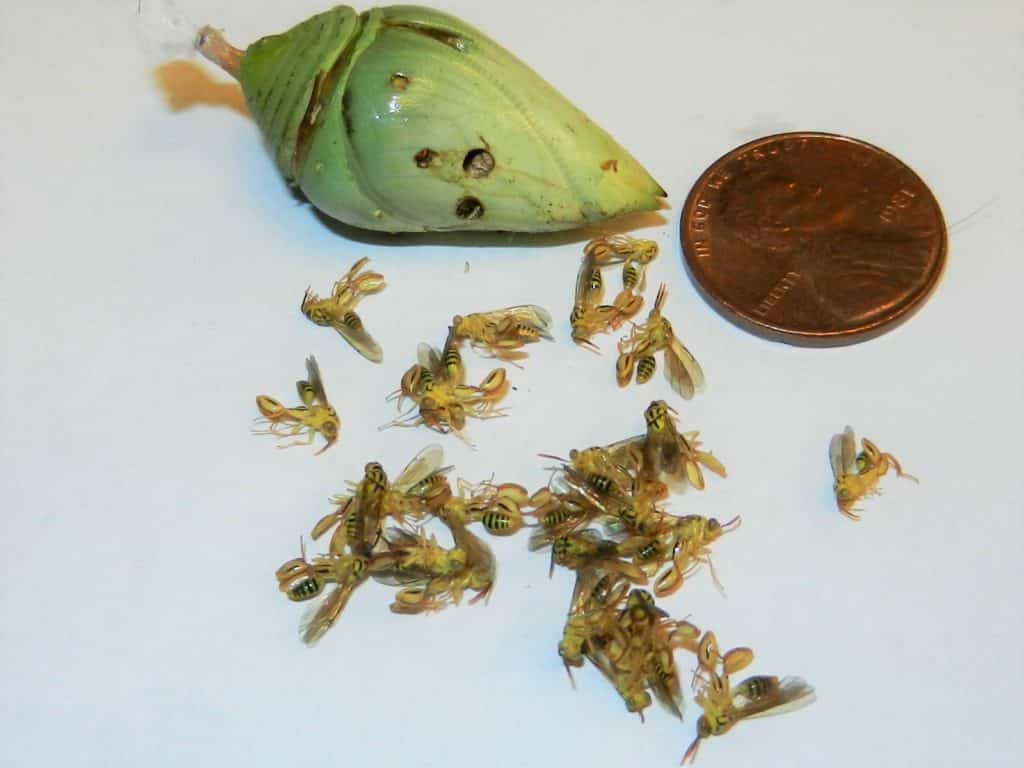
Then there is my paperwork. I am required by the USDA to record all the butterflies we receive, any that die or fail to emerge properly, and any instances of parasites. I compile this information and send an annual report to the USDA.
That is my overview of the steps that go into making it possible to give our guests a great butterfly experience. Come see our butterflies in action, searching for nectar and exploring their tropical surroundings!

Matt Edwards
Animal Care Specialist
Matt Edwards, Animal Care Specialist, has been providing for our tropical animals and arthropods since the biomes opened in 2003. As a youth Matt first expressed his fascination for animals tending to chickens, goats and dairy cattle as a farm hand. He then added professional experience by earning an Associate of Arts and Sciences from Lakeland CC. When not caring for chameleons and leaf-cutter ants, Matt enjoys relaxing with his pets Henry the Pomeranian and Petunia the Tortoise.
